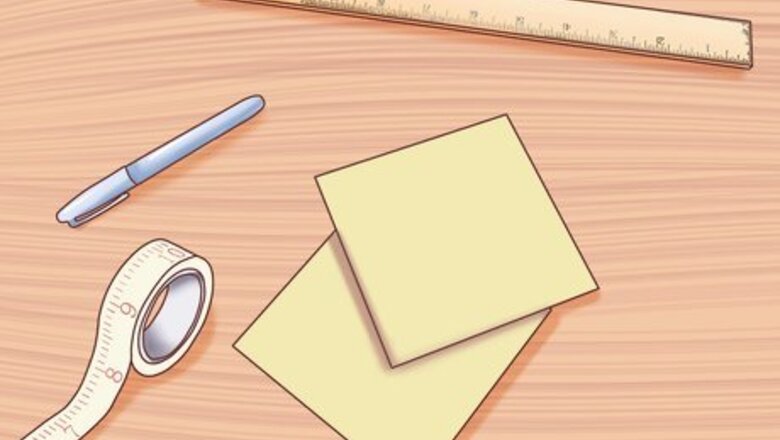
views
Note that performing this test does not count as a replacement for a visual acuity test by a professional and is only explained to give the reader a better understanding of the visual acuity concept. The results may not turn out to be accurate due to factors that must be controlled in a professional setting.
Remember that visual acuity is only one factor that affects your vision and a full eye examination performed by a professional includes numerous other tests. Eyesight of 20/20 does not mean perfect vision, neither does it mean healthy eyes!
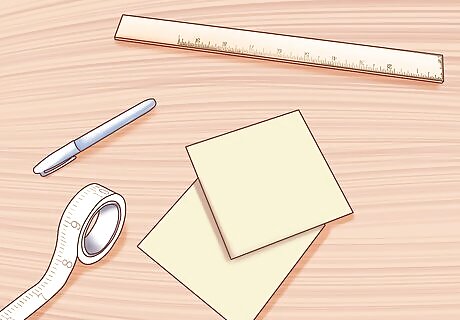
Grab a plain white printer paper, a ruler, a tape measure, a black marker, and invisible tape.

Using the ruler and the marker, starting from either top corner of the page, begin to measure and mark points in 2.0mm segments straight down the same side of the page until you have at least 10 of them. Repeat the procedure for the other side of the page starting from the other top corner this time. This step is done so that you can draw perfectly parallel horizontal lines from one side to the other.
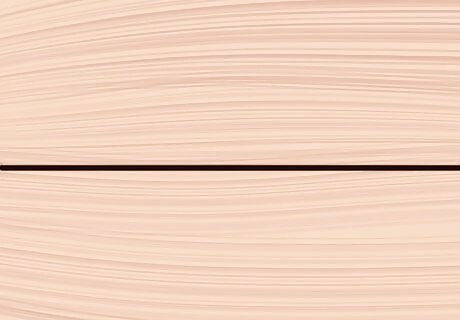
Now go ahead and draw your horizontal lines by appropriately placing your ruler and connecting corresponding points on each side. Then using the marker, start at the top and fill in the space between the 1st and 2nd lines, making the area between them completely black; repeat this for the space between the 3rd and 4th lines, 5th and 6th lines, and in the same order until you reach the last line. Now you should have a page with 2.0mm thick black horizontal lines separated by 2.0mm from each other.

Place and stick the page vertically on a wall in a way that the middle part of the back and white area is approximately at your eye level and centered between your eyes; you also need to make sure that the sides of your paper are parallel to the sides of the wall and the room is well lit with a good light source.

Put everything down, grab the ruler, stand in the position you were when you placed the page on the wall, cover your left eye, and slowly start walking straight back while keeping your right eye on the center of the page. As you keep walking back you will notice that it gradually becomes harder to distinguish between the black segments and white segments of the page till you get to a point that the whole page seems like plain grey with no lines. At this point stop and slightly move forward till you can just distinguish the dark and light areas. Mark your position by placing the ruler on the floor just in front of your feet and parallel to the wall.
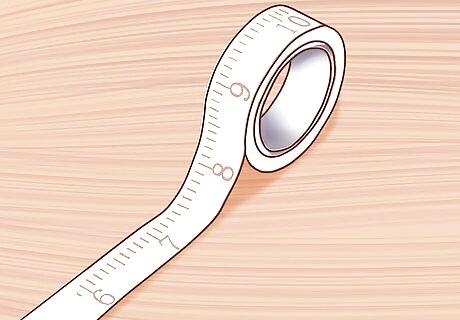
Grab the tape measure and measure the metric distance straight from the bottom of the wall to where the front of your feet were. Note that to be as accurate as possible, the tape measure must be perpendicular both to the wall and to the ruler when you perform your measurement. This article will use the symbol "d" for this measured distance in the calculations step.

Now comes the fun calculation part which is simply 138/d and will give you the number that you need to put in the denominator of the standard 20/xx model of visual acuity for your right eye. For instance if you measured 3.45m for "d" and insert it in the formula you will get 40 and thus an acuity of 20/40 for that eye. Furthermore the smaller your "d" the larger the denominator and the worse the acuity would be and vice versa. Note that 20/20 is achieved at a distance of 6.9m!
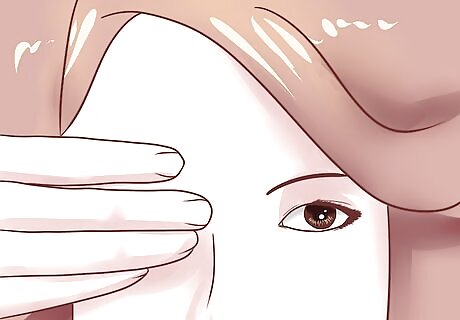
Repeat the last 3 steps this time covering the right eye to measure the acuity of your left eye. You can also repeat them a 3rd time with both eyes open to measure your binocular visual acuity.

Now that you have calculated your visual acuity, look at the logic behind it. What the visual acuity actually measures is the smallest angular distance between 2 points in space that the eye can resolve (ie. see both points rather than one). This so called "Minimum Angle of Resolution" or MAR is standardized to be 1.0 minutes of arc (ie. 1/60th degree) for a normal eye. Thus if a person with 1.0arcmin acuity mark 2 points on a wall with 2.0mm separation between them, he can't be farther than {(2/2)/[tan(0.5/60)]}=6900mm=6.9m away from the wall to resolve the separation! if the MAR is 2.0arcmin (acuity of 20/40), either the separation between the 2 points must be doubled or the distance of 6.9m must be divided in half for the person to be able to see, and this is how you just calculated your acuity!
















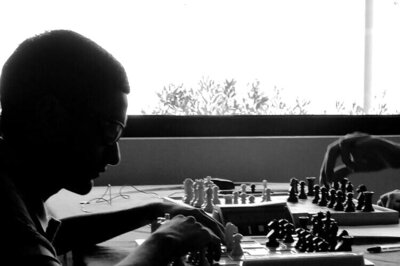

Comments
0 comment